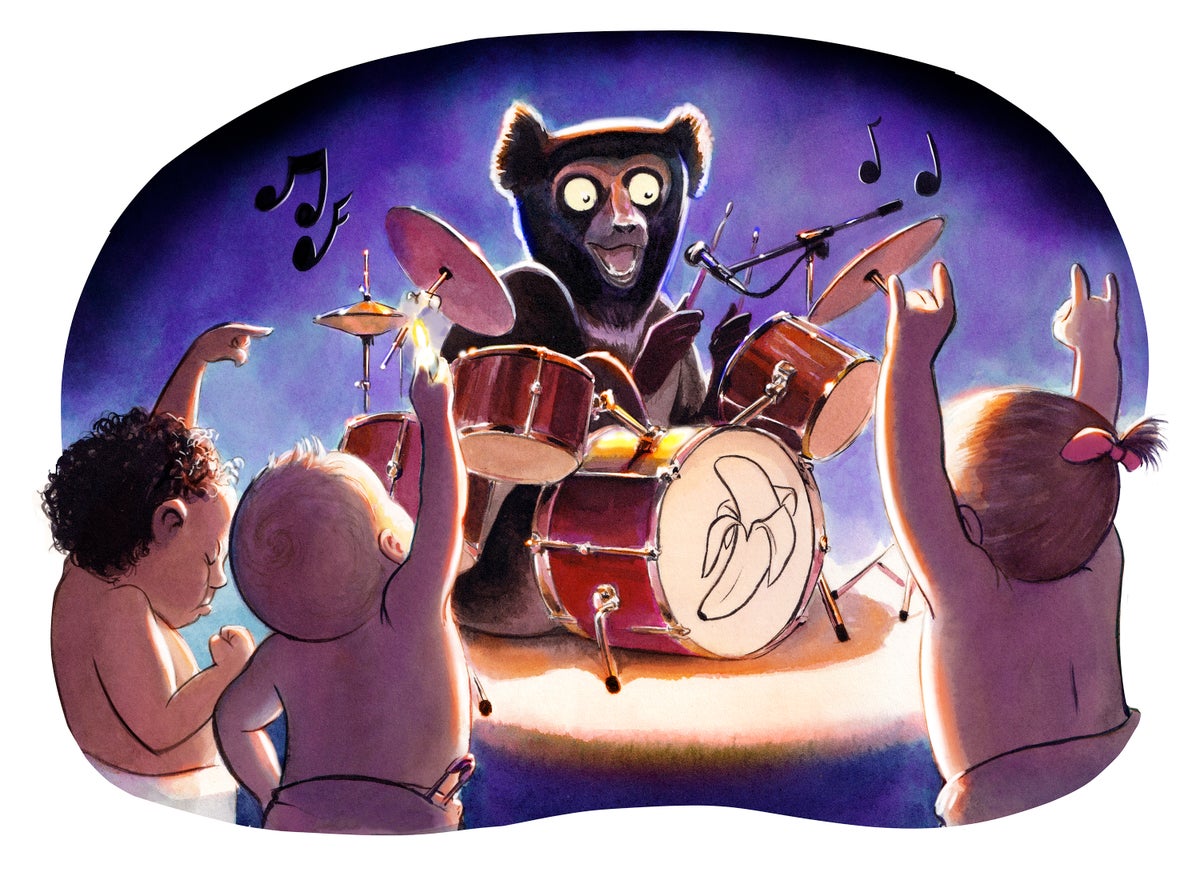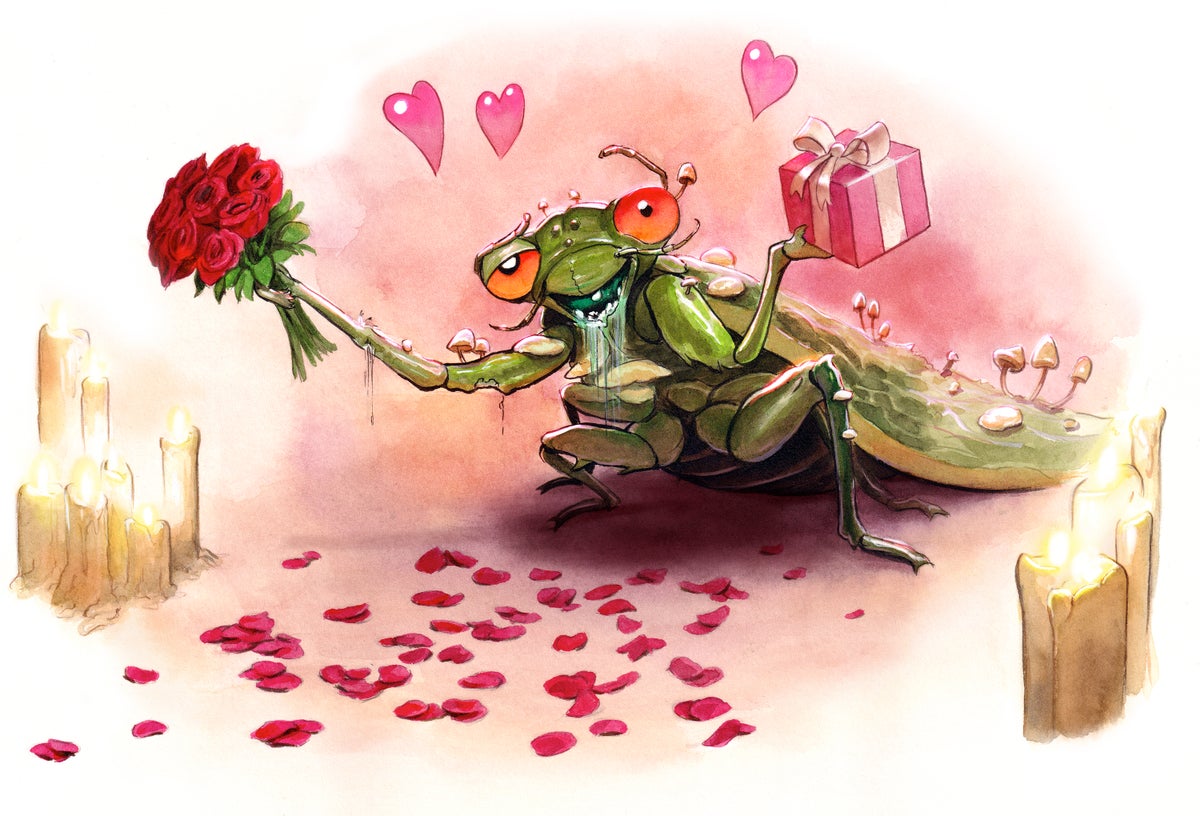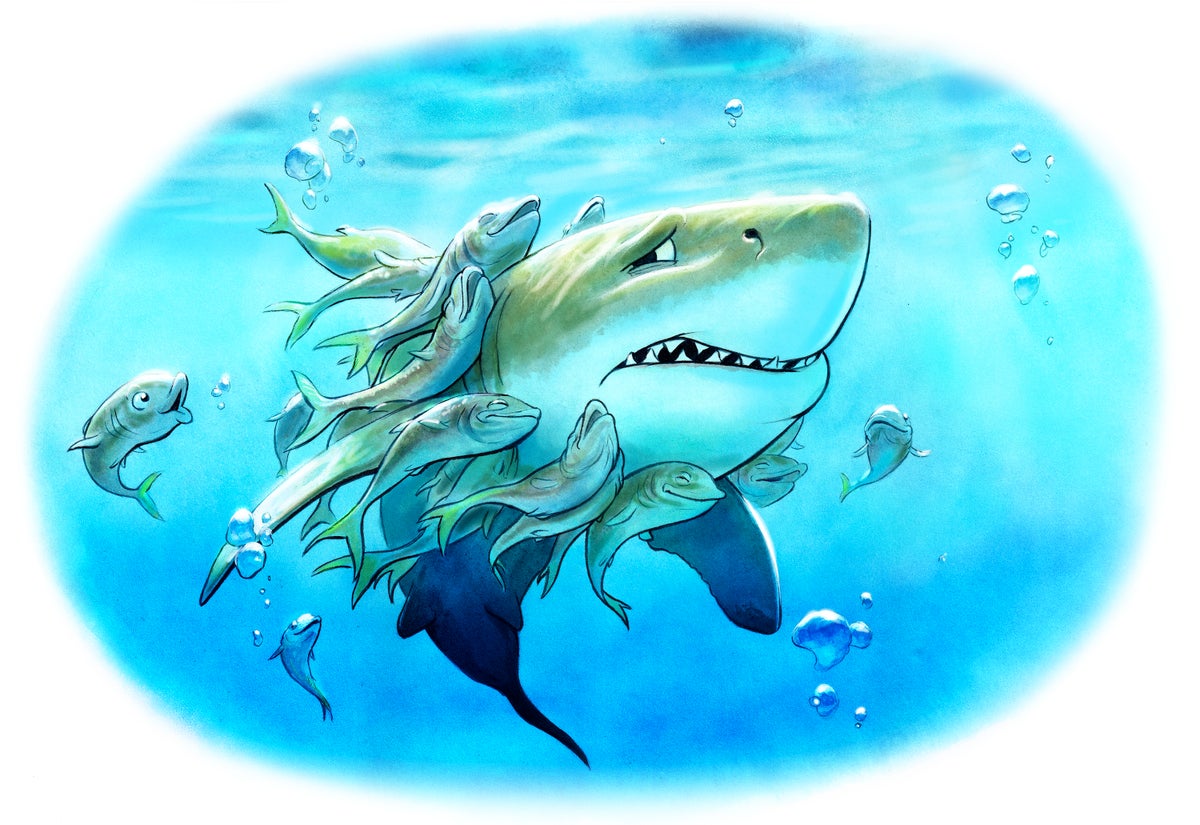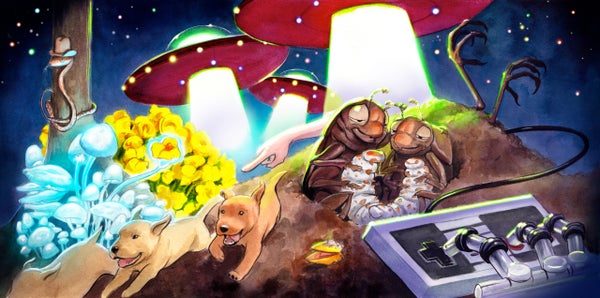Science is often thought of as a serious subject. But even though it tackles hugely important issues—many with life-or-death consequences—it also has a fun side. This year Scientific American has covered some stories that ranged from “Huh, that’s weird” to “Ew, gross” to “So. Cool.” Below, we’ve rounded up a few of our favorites (seriously, do not sleep on the potty-trained cows). We hope you enjoy them and learn more about the amazing and odd aspects of the world—and come back to see what astounding and wild discoveries 2022 has in store.
Moo Over, House-Trained Dogs
Most cattle roam their pastures peeing with abandon, but scientists have now trained calves to use a special latrine called MooLoo. After just 10 days of lessons, many of the calves used MooLoo 77 percent of the time. This could help farmers mitigate pollution, greenhouse gas emissions and the potential spread of disease. (Also in this story: wombats’ cubic poop, secret pee signals and pandas’ unusual strategy to stay warm.)
On supporting science journalism
If you're enjoying this article, consider supporting our award-winning journalism by subscribing. By purchasing a subscription you are helping to ensure the future of impactful stories about the discoveries and ideas shaping our world today.
Is It Aliens?
In June the Pentagon finally released a long-awaited report on a spate of recent UFO sightings by members of the U.S. military. The report denied that any domestic technology program was the source of the phenomena and, while citing a lack of sufficient evidence, did not explicitly rule out extraterrestrial visitors as a possible cause. Most experts, however, remain skeptical that E.T. has arrived.
Floral Fraud
The fungus Fusarium xyrophilum is a master of botanical disguise. It infects Xyris grass, sterilizes it and then produces uncanny mimics of the plant’s yellow flowers. F.xyrophilum is evidently the first fungus known to use this strategy, which is thought to help it spread its spores.

Credit: Scott Brundage
Lemurs Got Rhythm
The high-pitched, wailing duets of Madagascar’s giant indri lemurs may sound chaotic at first, but a study shows they actually have a regular underlying timing pattern. This makes the lemurs the first known nonhuman mammals to possess musical rhythm—though they probably won’t be winning a Grammy anytime soon.*
My Primate Teacher
Lemurs also taught us something about ourselves. The babbling baby talk that doting parents coo at their bundles of joy helps infants learn about the world around them, including basic things such as differentiating between pets and people. It turns out, though, that those tiny ears can also learn something from nonhuman primates—in this case, lemurs. But songbirds do not measure up as pedagogues, researchers learned. The distinction sheds light on humans’ apparently unique capacity for language.
When the Perfect Gift is an Edible Body
Finding the perfect present for the kids can be a hassle for harried parents around the holidays. But at least they can take comfort in the fact that they don’t have to wrap up a dead body. For certain beetle parents, a well-hidden bird or mouse corpse is the gift that just keeps on giving. Hopefully, this is one present you’ll never be able to order online.
Forget Steaming Open Envelopes
In the centuries before pregummed envelopes, people sealed their correspondence using a variety of techniques ranging from simple fold-and-seal containers to elaborate multistep processes that produced a letter impossible to open without ripping the paper—thus revealing any potential attempts to snoop. This “letterlocking” presented a conundrum to researchers who wanted to read antique missives without destroying the complicated folds. So scientists have turned to 21st-century technology (high-resolution imaging and a virtual unfolding algorithm) to spy on 17th-century correspondence without opening it.
Chopper on Mars
Success was not guaranteed for Ingenuity, the prototype drone that arrived on the Red Planet alongside NASA’s Perseverance rover in February. To take off and stay aloft in the thin Martian atmosphere, this “Marscopter” would have to spin its blades at about 2,800 revolutions per minute—about 10 times faster than helicopters on Earth. When it finally, fatefully soared to achieve the first-ever powered, controlled flight of an aircraft beyond Earth, a big part of the spectacle was on our planet, where scientists and engineers erupted in celebration.

Credit: Scott Brundage
Insect Sex Zombies
As billions of Brood X cicadas emerged from their 17-year-long underground slumber this year, a subset of them became infected with a soil fungus. And here’s where it gets really gross: the fungus causes the male cicadas’ genitals to fall off, leaving behind a white plug of spores that are spread as the males try to mate. And try they do, becoming something like sex-obsessed automatons. Scientists are still trying to figure out how the fungus takes over its host.
Robot Hand, No Assembly Required
The process of 3-D printing a machine usually involves creating each part separately and then assembling those parts to form the final product. But for the first time, researchers have printed soft robots in a single process—no assembly required. And to test the effectiveness of one of their devices, a soft robot hand, they programmed it to beat the first level of Super Mario Bros. Presumably, it doesn’t get those pesky finger calluses.
New Snake Movement Just Dropped
Researchers in Guam spotted brown tree snakes forming their bodies into “lassos,” which they used to hoist themselves up smooth metal poles and reach birds’ nesting boxes. This strenuous process lets the snakes climb wider columns than their usual climbing grip does, and it opens up an alarming new option for wrangling prey. Yeehaw!
World’s Longest “Long Winter’s Nap”
Stop us if this sounds familiar, but 2021 has been a rough year. Many of us would probably like to just sleep through December and start over in the new year. But even that near-suspension of animation would have nothing on a rotifer: one of these microscopic animals, pulled out of Siberian permafrost, spent the past 25,000 years in a frozen nap before being reanimated. Even after all that rest, the little critter still might not be ready to face 2022.
New Physics from a TV Classic
In the world of Star Trek, a ship’s “warp drive” allows it to travel at impossible speeds. For fans of the franchise who also happen to be scientists, this fictional technology makes for an interesting topic of study. In the process of calculating whether faster-than-light travel could ever become possible, they are making new physics discoveries. Engage!

Credit: Scott Brundage
Dangerous Predator or Fishy Spa?
Instead of quickly swimming away from sharks, a surprising number of fish species actually pursue the fearsome predators to use as something like a living backscratcher, an analysis of drone footage, photographs and diver video feeds shows. Scientists aren’t sure why these fish engage in shark chafing, but they could do so to remove bacteria and parasites—or because, well, it feels good.
The Year’s Most Adorable Study
The methods section of any scientific study is often a dry read, but one researcher has thrown us all a bone by putting 375 puppies in hers. Emily Bray, a postdoctoral researcher at the University of Arizona, faced down the scientific challenge of teasing out whether dogs have to learn to interpret human communications—or if that is something they come by naturally. Floppy-eared cuteness—and science—ensued.
*Editor’s Note (1/4/22): This sentence was edited after posting to clarify the type of rhythm the indris demonstrated.
